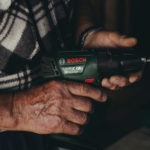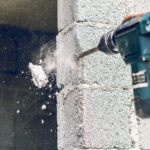If you’re looking for a way to get the job done faster and with less effort, then an electric screwdriver or drill is just what you need. These tools are designed to provide power and speed that can’t be matched by using your hands alone.
There are many different models available on the market today, so it’s important to do some research before making a final decision.
In this article, we’ll explore the differences between drills and electric screwdrivers so that you can make an informed choice about which tool will be best for your needs.
What is an Electric Screwdriver?
An electric screwdriver is a tool that can be used to drive screws into wood, metal, or other hard surfaces. It’s essentially the same as using a power drill, but with one important difference – you don’t have to hold it in your hand while you’re driving the screw.
Electric screwdrivers are usually battery-powered and come with an interchangeable bit system that allows you to use a variety of different tips for driving screws. They are also typically smaller and lighter weight than drills, making them a good choice for tasks that require more precision.
Electric Screwdriver Pros and Cons
The pros of using an electric screwdriver include:
- They are smaller and lighter weight than drills, making them a good choice for tasks that require more precision.
- They come with interchangeable bits that allow you to use a variety of different tips for driving screws.
- Some models are powered by batteries, which makes them portable.
- They are less expensive than drills.
The cons of using an electric screwdriver include:
- They may not have the power to drive screws into harder surfaces like metal.
- Some models are not as durable as drills.
What is an Electric Screwdriver Good For?
An electric screwdriver is a good choice for tasks that require precision and speed. If you need to drive a lot of screws in a short amount of time, or if your hands are not strong enough to do the job manually, then an electric screwdriver is the tool for you.
They are also ideal for those with arthritis or other conditions that cause pain when they are used for longer periods of time.
What is a Drill?
A drill is a tool that can be used to create holes in wood, metal, or other hard surfaces. It can also be used to drive screws, but this is not its primary function.
Drills are typically powered by electricity, but there are also some models that run on gasoline. They come with a variety of different attachments, such as drill bits and saw blades, that allow you to do a wide variety of tasks.
Drills Pros and Cons
The pros of using an drill include:
- Drills tend to be more powerful than electric screwdrivers.
- They can also handle a variety of different tasks, such as drilling holes and driving screws.
- They come with a variety of different attachments, such as drill bits and saw blades, so they’re ideal for doing everything from hanging pictures to building shelves.
The cons of using an drill include:
- They are typically larger and heavier which makes them harder to use in certain areas or with smaller pieces of equipment.
What is a Drill Good For?
Drills are typically better suited to tasks where speed and power are the most important factor, or if you need to drive screws in large quantities.
If you’re working on an intricate project, such as building furniture with detailed designs, then you’ll find that an electric screwdriver is not as versatile or precise as a drill.
Electric Screwdriver vs Drill: Which Tool is Best?
So, which tool is better – an electric screwdriver or a drill? The answer to that question depends on what you need the tool for.
If you’re looking for a tool that can be used to drive screws into hard surfaces, then an electric screwdriver is the best choice. They are smaller and lighter weight than drills, making them a better choice for tasks that require more precision.
If you’re looking for a tool that can be used to create holes in hard surfaces as well as drive screws, then a drill is the best option. They come with an interchangeable bit system and have attachments such as saw blades that allow you to use them for a variety of different tasks.
How to Use a Drill?
If you’re looking to use a drill, there are a few basic steps that you need to follow in order to ensure proper usage.
First, find the right-sized drill bit for the job. You want to make sure that it’s slightly larger than the hole that you’re trying to create. Next, place the drill bit at the base of the hole and hold it in place with your fingers. Then, use your other hand to turn on the drill and begin digging out the hole.
Then, you’ll want to make sure that it’s properly lubricated before use by applying a few drops of penetrating oil at key points around the machine (like where the motor meets its housing). Finally, after each use, be sure to wipe it down with a clean rag to remove any debris.
Can I Use a Screwdriver Instead of a Drill?
Yes, you can use a screwdriver in place of a drill in many cases. However, it’s important to keep in mind that screwdrivers are not as powerful as drills and they may not be able to handle tougher jobs. If you’re looking for a tool that can do both drilling and driving screws, then an electric screwdriver is a good option.
Can An Electric Screwdriver Drill Through Wood?
An electric screwdriver is not designed to drill through wood. It can be used to drive screws into wood, but it will not be able to create a hole as a drill can. If you need to drill holes in wood, then you’ll need to use a drill instead of an electric screwdriver.
Can You Screw Straight Into Wood?
Yes, you can definitely screw straight into wood with an electric screwdriver or drill. In fact, this is one of the most common uses for these tools. However, it’s important to use caution when doing this, as you can easily strip the head of the screw if you’re not careful.
When using a drill to drive screws into wood, it’s important to drill a pilot hole first. This will prevent you from stripping the head of the screw and ensure that your screws stay firmly in place.
How to Remove a Screw with a Cordless Drill?
If you’re looking to remove a screw, then a cordless drill is going to be your best option. This tool works in a similar fashion as an electric screwdriver by driving the screws into place. However, if they become loose or come out completely, it can also help you retrieve them without having to dig around under the work area.
When removing a screw, start by finding the right-sized drill bit.
You want to make sure that it’s slightly smaller than the screw itself so that you can create a snug fit. Next, place the drill bit at the base of the screw and hold it in place with your fingers. Then, use your other hand to turn on the drill and begin digging the screw out of its hole.
Conclusion
If you’re looking for a way to get the job done faster and with less effort, then an electric screwdriver or drill is just what you need. These tools are designed to provide power and speed that can’t be matched by using your hands alone.
There are many different models available on the market today, so it’s important to do some research before making a final decision.
In this article we explored the differences between drills and electric screwdrivers so that now you can make an informed choice about which tool will be best for your needs!





